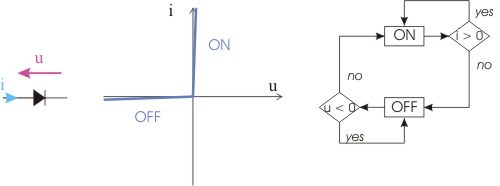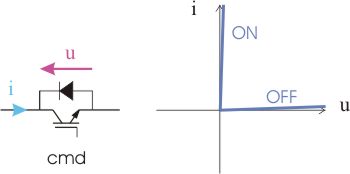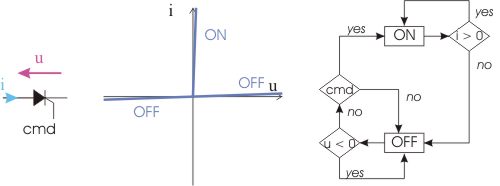A semiconductor operates as a switch if it can have two distinct states (figure 1):

Figure 1
- the ON state (or passing state) in which the semiconductor opposes a neglectable voltage drop (ideally zero) to the flowing of the current and acts like a connexion between its terminals, as a closed switch would do.
- the OFF state (or blocking state) in which the semiconductor opposes a very high impedance (ideally infinite), which excludes all connection between its terminals, as an open switch would do.
The way in which a semiconductor switches from a state to the other depends on the semiconductor's type.
- a diode is in the ON state if the current that flows through it is positive. It switches to the OFF state if the current tends to become negative. It remains in the OFF state as long as the voltage to its terminals is negative (figure 2).

Figure 2



